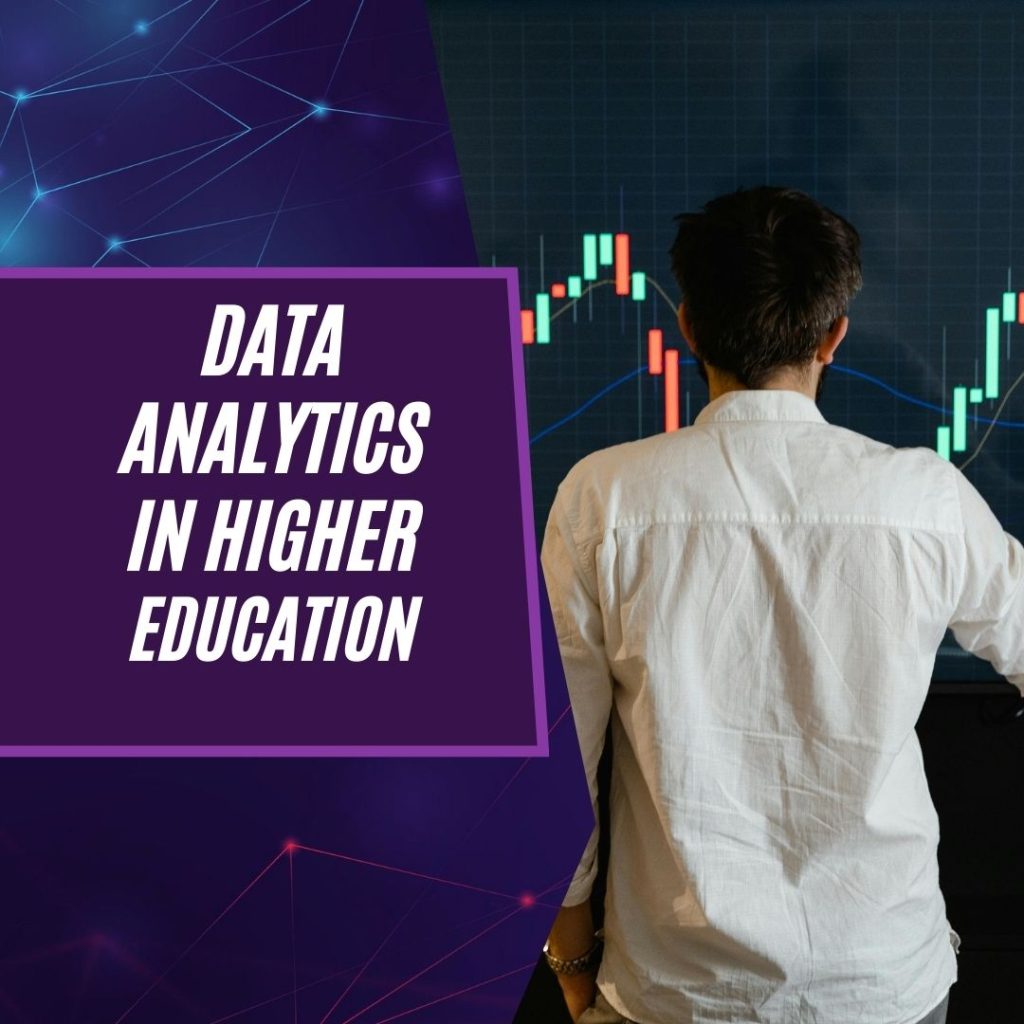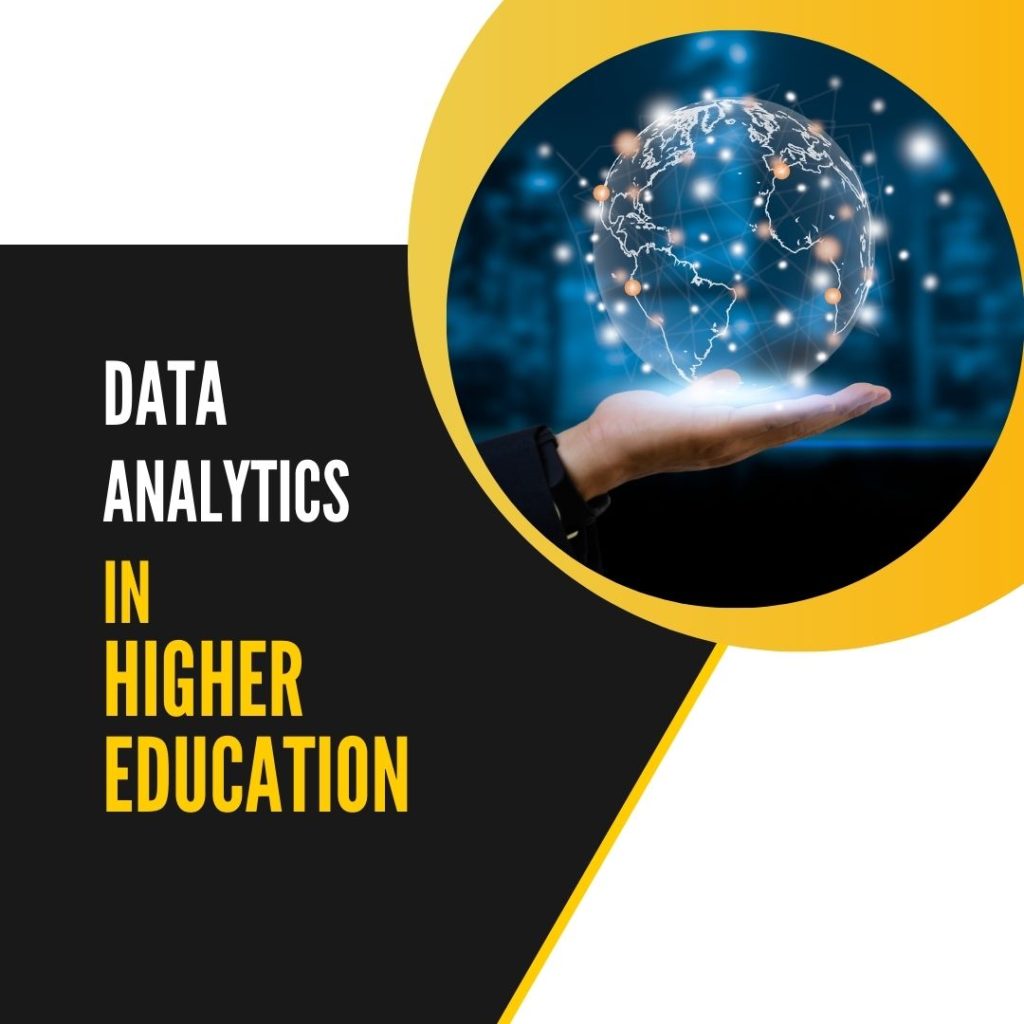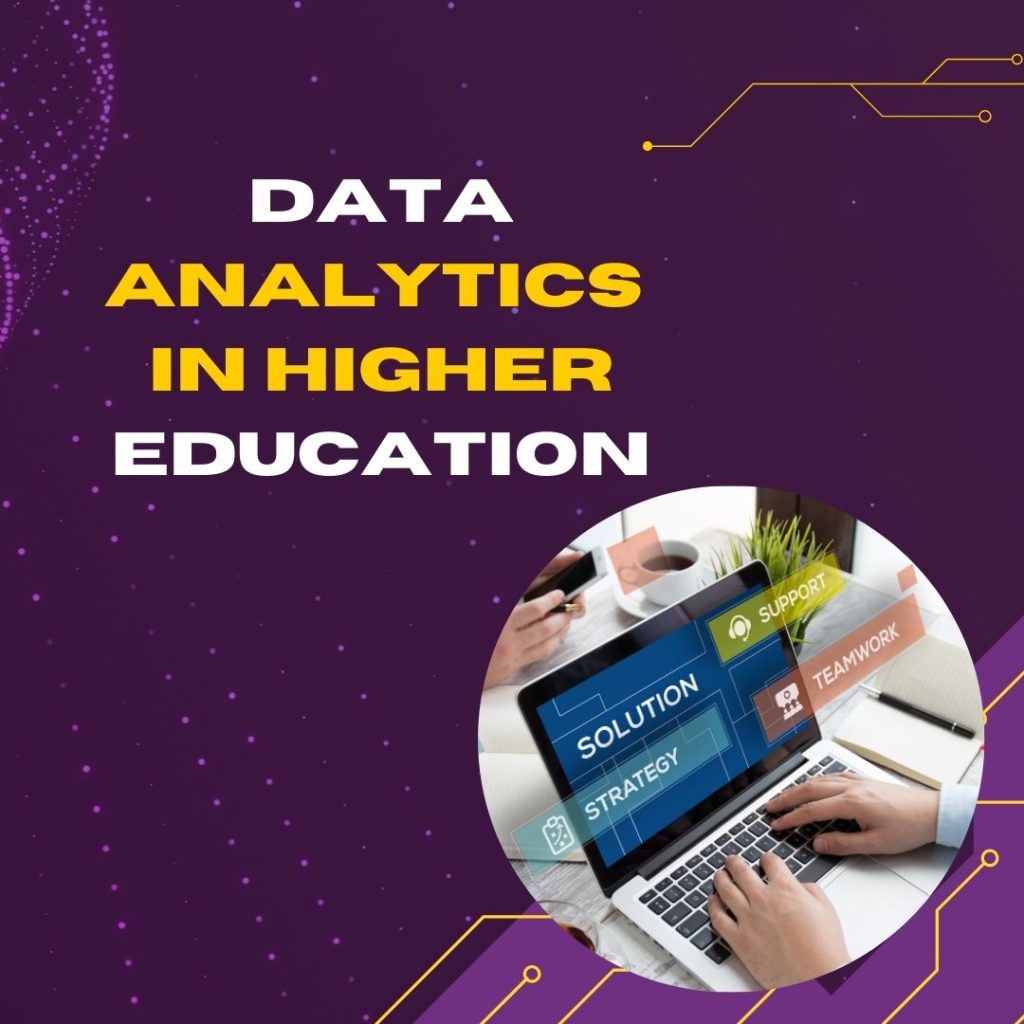Data Analytics in Higher Education to improve Decision Making Skill
Data analytics in higher education harnesses educational data to improve decision-making. It applies statistical analysis to student data for insights into learning and administrative improvement.
The integration of data analytics within the higher education landscape marks a pivotal shift in how institutions operate and evolve. Universities and colleges are now leveraging the vast amounts of data generated by their students and faculty to drive strategic planning and enhance the student experience.
By analysing patterns ranging from enrolment and retention rates to learning outcomes and resource allocation, academic institutions are developing more targeted interventions and personalized learning pathways. This use of data analytics not only streamlines operational efficiencies but also fosters a more conducive learning environment. As the digital footprint of the education sector continues to expand, data analytics becomes increasingly critical in shaping the future of higher education, ensuring that institutions remain agile, innovative, and student-cantered in a rapidly changing world.
The Role Of Data Analytics In Modern Education
The way we understand and enhance learning experiences continues to evolve. Data analytics plays a pivotal role in this transformation. Universities and colleges leverage various data sources to tailor education strategies better. Here’s how:
Shaping Student Success Strategies
Data analytics helps educators unlock the potential within each student. Using data, institutions can:
- Identify at-risk students early by monitoring grades and engagement.
- Personalize learning through adaptive learning platforms.
- Enhance student services by predicting and responding to student needs.
With insights from data analytics, teaching staff can craft success paths unique to each learner.
Optimizing Institutional Operations
| Operation | Impact of Data Analytics |
|---|---|
| Course Scheduling | Data-driven schedules maximize resources and minimize conflicts. |
| Resource Allocation | Strategic investment in programs shown to boost student outcomes. |
| Budget Management | Smarter budgeting through spending pattern analysis. |
Efficiency in operations is key for any institution. Schools harness data insights to streamline processes and save costs.

Sources Of Data In Higher Education
The landscape of higher education continuously evolves, powered by data. Data analytics transforms how institutions understand their operations and students. Recognizable sources of this invaluable resource span from the student’s first inquiry to the proud moment of their graduation. Engaging with these data sources informs strategic decision-making, shapes curricula, and enhances student outcomes. Let’s explore the various data wellsprings in the context of higher education.
From Enrollment To Graduation: Tracking The Student Lifecycle
Institutions gain insights by analyzing the student lifecycle. This analysis includes various stages:
- Admission Applications: Quantity, quality, and demographics of applicants
- Enrollment Rates: Comparison between different departments and trends over time
- Course Completion: Success rates and challenges students face in courses
- Graduation Outcomes: Time to graduation and post-graduation placements
Data points during each phase reveal the efficiency of academic processes. They guide interventions to improve student retention and success. The table below showcases some key data metrics:
| Stage | Metrics |
|---|---|
| Admissions | Application numbers, acceptance rates, student demographics |
| Enrollment | Enrollment rates, diversity statistics, financial aid information |
| Course Progression | Pass/fail rates, dropouts, average grades |
| Graduation | Graduation rates, time to degree, job placement stats |
Harnessing Digital Footprints: Learning Management Systems
Learning Management Systems (LMS) act as gold mines for data on student engagement. These platforms track:
- Logins and Time Spent: When and how long students engage with course materials
- Assignment Submissions: Timeliness and quality of coursework completed
- Discussion Participation: Student involvement in course forums and peer interactions
- Resource Utilization: Which learning resources students access the most
Analysing LMS data enables educators to tailor teaching approaches to student needs. It uncovers patterns in student behaviour and learning preferences. These insights lead to personalized education experiences. Institutions refine strategies, driving academic success across diverse learning environments. Below is an example of the data captured:
| LMS Feature | Data Type |
|---|---|
| User Login Activity | Frequency, duration, time of day |
| Content Interaction | Pages visited, videos watched, resources downloaded |
| Assignments | Submission times, grades, resubmission counts |
| Discussions | Number of posts, replies, likes |
Tools And Technologies Behind The Data
The realm of higher education increasingly turns to data analytics to navigate the complex landscape of academic success. This involves a matrix of sophisticated tools and technologies. They help institutions make sense of vast data. These tools shape strategies in enrollment, course effectiveness, student retention, and much more.
Software That Transforms Numbers Into Narratives
At the heart of higher education data analytics lie powerful software suites. These applications convert raw numbers into insightful stories. Innovative software like Tableau, Microsoft Power BI, and Google Analytics stand out. They provide interactive visualization and dashboard capabilities.
- Tableau allows users to create intuitive charts and graphs.
- Power BI integrates easily with Excel and offers a suite of business intelligence tools.
- Google Analytics shines in tracking website engagement, vital for university online portals.
These tools bring trends and patterns to the forefront. This empowers decision-makers to act on concrete evidence rather than hunches.
The Emergence Of Ai And Machine Learning In Data Analysis
AI and machine learning represent a significant leap forward in data processing. These technologies automate complex analysis tasks. They reveal hidden insights within student data. Tools like IBM Watson Analytics and DataRobot use AI to predict student outcomes.
| Technology | Description | Benefits |
|---|---|---|
| IBM Watson Analytics | Uses natural language processing | Uncovers deep trends |
| DataRobot | Automates machine learning models | Predicts student success rates |
These advancements in AI and machine learning foster a proactive approach in educational management. They enable personalized student support systems built on predictive analytics.

Unveiling Patterns Through Predictive Analytics
Predictive analytics changes the game in higher education. It uncovers hidden patterns. These patterns help schools understand students better. It is like a crystal ball. This ball shows what might happen in the future.
Forecasting Student Performance And Outcomes
Predictive analytics acts as a fortune teller for student success. It looks at past data. This data can be grades, attendance, or participation. From this, schools guess how students will do. They can see who might need help.
- Look at past grades to guess future grades.
- Find out if a student might fail or drop out.
- See which classes have high pass rates.
Enhancing Retention Rates With Early Interventions
Early help keeps students in school. Predictive analytics tells schools who might leave. Then, they can offer help sooner. This can be tutoring, counselling, or other programs.
| Issue | Early Sign | Action |
|---|---|---|
| Low Grades | Bad quiz scores | Study Groups |
| Missing Class | Empty seats | Attendance Rewards |
| Low Engagement | Not joining in | Social Events |
Data-driven Decision-making In University Administration
In the world of higher education, university administration faces complex choices daily. The surge in data analytics tools has revolutionized how these decisions get made. Embracing these advancements provides administrators the power to make more informed choices, enhancing student success and institutional growth.
Allocating Resources With Precision
Administrators can now tap into vast amounts of data to distribute resources wisely. By analyzing student enrollment patterns, campus resource usage, and academic success rates, universities can prioritize spending.
- Focused investments: Direct funds to high-demand areas.
- Needs-based funding: Allocate budget more effectively.
With analytics, institutions can pinpoint programs that benefit most from increased investment, ensuring a more sustainable campus model.
Crafting Policy Based On Solid Evidence
Data analytics enables policy-makers to base decisions on firm evidence rather than intuition. By examining trends and patterns, universities can formulate strategies that truly address student needs.
- Assess program effectiveness with precision.
- Adapt learning strategies to optimize performance.
- Ensure policies reflect the actual landscape.
Smart policy development, underpinned by solid data, sets the stage for success in the academic sphere and beyond.

Challenges And Ethical Considerations
Data Analytics in Higher Education brings profound insights but also presents significant challenges and ethical considerations. Institutions must balance analytical benefits against the protection of student privacy and ensuring that analytic methods promote equity. Understanding these dimensions is crucial for responsible data use.
Navigating The Complexities Of Data Privacy
Data privacy in higher education is a labyrinth of legal, ethical, and practical concerns. Universities collect extensive student data, raising questions about security and data management. Institutions must comply with regulations like FERPA and GDPR while keeping data safe from breaches. Student consent is also critical, demanding transparency about data collection and use.
Ensuring Equity And Fairness In Analytic Approaches
Data analytics has the power to transform education but poses the risk of unintentional bias. Schools must ensure that data-driven decisions do not disadvantage any student group. This involves careful curation of algorithms and constant vigilance to correct any bias. Equity in analytics is vital for fairness in student outcomes and opportunities.
- Data accuracy and unbiased algorithms are essential for fair analysis.
- Training faculty on the ethical use of student data reinforces accountability.
- Regular audits identify and rectify disparities in data-driven decisions.
The intersection of data analytics and education sparks debate and requires ongoing dialogue. By addressing these challenges, institutions can wield data analytics as a force for positive change and student development.
Successful Integrations Of Analytics In Institutions
Data Analytics is bringing a revolution to higher education. Colleges are using it to improve teaching and aid student success. Analytics helps predict student performance and boost graduation rates. Colleges can spot trends and improve operations, too.
Case Studies Of Analytics Driving Change
Many colleges have seen big benefits from using data analytics. Here are some cases:
- Georgia State University: They used analytics to keep students on track for graduation. Their system alerts them to help students at the right time.
- Arizona State University: They created a platform for personalized learning. It adapts to each student’s needs and helps them master subjects.
- University of Michigan: They launched a tool for better course planning. It makes it easy for students to find the courses they need.
Measuring The Impact Of Analytic Interventions
To understand how well analytics work, colleges measure their impact. They look at different factors:
| Factor | Method of Measurement |
|---|---|
| Student Grades | Before and after analysis of grade trends |
| Graduation Rates | Year-over-year comparison of graduation numbers |
| Course Completion | Checking course dropout rates before and after interventions |
With these measures, colleges can see the power of analytics. It’s clear that data-driven decisions can lead to strong outcomes in higher education. Students succeed, and institutions grow smarter.
Preparing For A Future With Advanced Analytics
Data analytics is revolutionizing higher education. Colleges and universities now harness vast data sets. These insights greatly impact student success, academic programs, and strategic planning. Advanced analytics will shape the future of education. Thus, it’s vital to prepare current and future academic professionals to manage and interpret this data effectively.
Training Educators And Administrators For Data Proficiency
To empower educators and administrators, schools are offering data analytics training. These courses cover data management, analysis techniques, and interpretation strategies. Skills in these areas ensure that decisions made will be backed by evidence.
- Workshops on data tools and software
- Online courses for flexible learning
- Integration of data studies in professional development programs
Anticipating Shifts In Educational Models
Schools use advanced analytics to predict and adapt to changes in education. This prepares them for emerging trends and technologies. From personalized learning experiences to online educational platforms, analytics plays a key role.
| Trend | Impact | Response with Analytics |
|---|---|---|
| Personalized Learning | Improves student engagement | Track individual student progress |
| Online Programs | Increases accessibility | Analyse enrolment and completion rates |
| AI Tutors | Enhances tutoring efficiency | Monitor tutoring sessions and outcomes |
Frequently Asked Questions Of Data Analytics In Higher Education
How Does Data Analytics Benefit Colleges?
Data analytics helps colleges by improving student outcomes and operational efficiency. It provides insights into academic performance, predicts student success, and helps in resource allocation.
What’s The Role Of Big Data In Higher Education?
Big data plays a pivotal role by enabling personalized learning and informed decision-making. It aids in curriculum development and enhances the student experience through detailed data analysis.
Can Data Analytics Predict Student Dropout?
Yes, data analytics can predict student dropout by identifying at-risk students through patterns and trends. Educational institutions use these insights to implement targeted interventions.
How Do Educators Use Data Analytics?
Educators use data analytics to tailor teaching methods and materials to students’ needs. They analyse performance data to adjust instructional strategies and improve learning outcomes.
Conclusion
Data analytics has transformed the landscape of higher education. By embracing data-driven strategies, institutions can unlock insights to elevate learning experiences. This evolution paves the way for more informed decisions, improved academic outcomes, and tailored educational paths. Ultimately, higher education must continue to integrate analytics to remain innovative and student-centric in a dynamic world.







